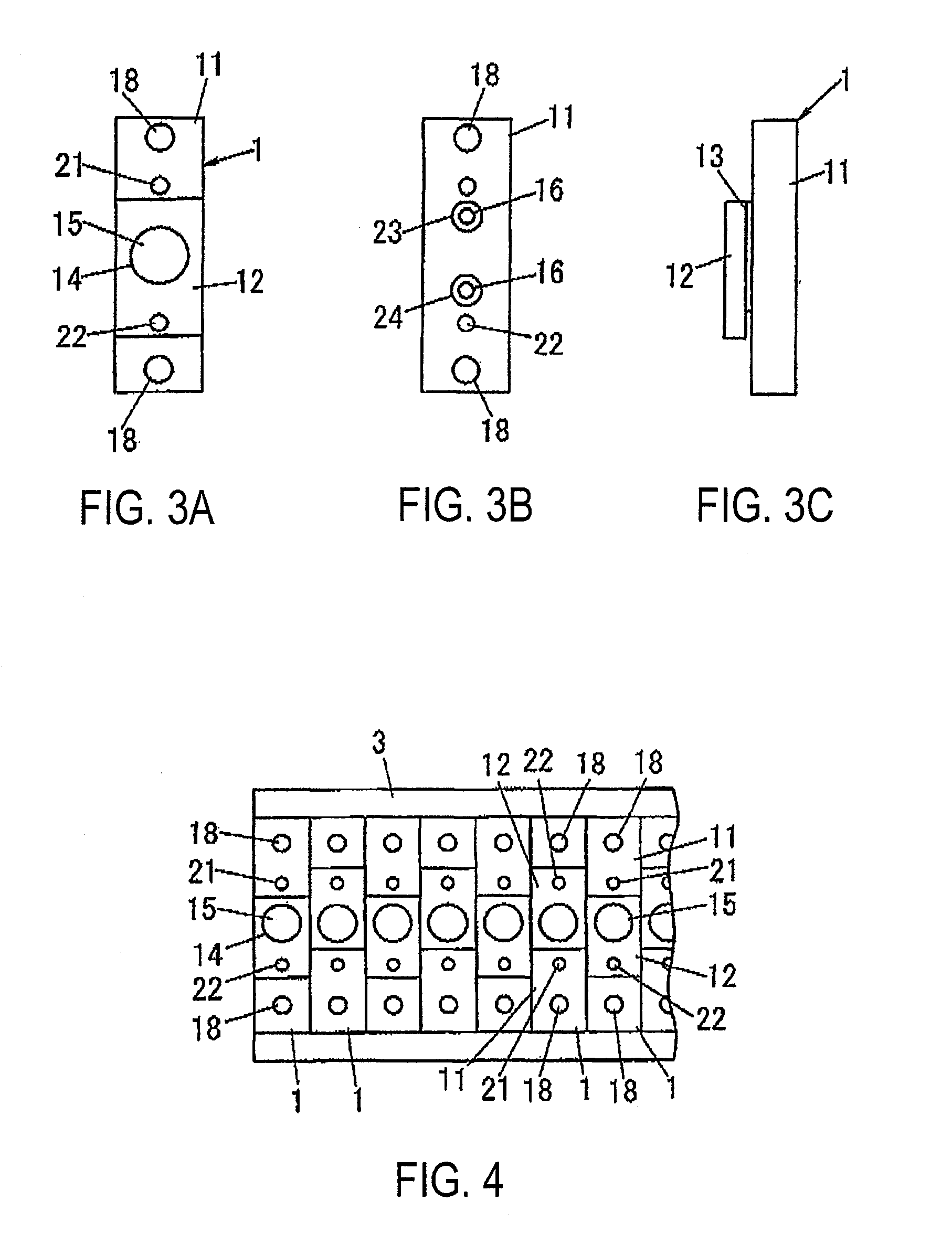Heatsink and semiconductor device with heatsink
a heatsink and semiconductor technology, applied in semiconductor lasers, electrical apparatus construction details, light and heating apparatus, etc., can solve the problem of relatively high water leakage probability, achieve high output light source, reduce the number of parts, and enhance watertight performance
- Summary
- Abstract
- Description
- Claims
- Application Information
AI Technical Summary
Benefits of technology
Problems solved by technology
Method used
Image
Examples
first embodiment
[0049]A heatsink to be described below is explained by taking, as an example, a case where the heatsink includes a UV-ray light emitting diode as a heating element. Incidentally, in the invention, not only the UV-ray light emitting diode emitting light of ultra-violet ray wavelength range, but also a light emitting diode other than the UV-ray light emitting diode, such as one emitting light of visible wavelength range, can be adapted as the heating element. Further, other power semiconductor elements can be also adapted as the heating element.
[0050]As shown in FIGS. 1 through 3, a heatsink body 1 is constructed as a layered product generated by stacking a base substrate 11 made of a metal plate on which a UV-ray light emitting diode 2 corresponding to a bear chip is mounted, a cover substrate 12 made of a metal plate surrounding an area of the base substrate 11 where the UV-ray light emitting diode 2 is mounted, and an insulating material layer 13 that is interposed between the base...
second embodiment
[0065]In the first embodiment, the structure is provided such that the heatsink body 1 and the header 3 are coupled in the watertight manner by use of the annular sealing member 4. On the other hand, in the present embodiment, the structure is provided such that a sheet-shape sealing member 5 is employed instead of the annular sealing member 4. Further, in the first embodiment, the recesses 23 and 24 are provided for housing the sealing members 4 in the heatsink body 1. On the other hand, in the present embodiment, the recesses 23 and 24 are unnecessary.
[0066]The sealing member 5 has such dimensions as to be the same as the entire area of the surface of the base substrate 11 constituting the heatsink body 1 that opposes to the header 3. The sealing member 5 is made of a material that exhibits a rubber elasticity similarly to the sealing member 4. In the sealing member 5, a supply hole 41 and a discharge hole 42 for communicating the supply port 34 and the discharge port 35 to the re...
third embodiment
[0070]In the present embodiment, as shown in FIGS. 9 and 10, a pair of insertion tubes 26 and 27 are provided so as to project from the base substrate 11 of the heat sink body 1, and the heatsink body 1 is mounted on the header 3 in a state that the insertion tubes 26 and 27 are inserted in the header 3. The circulation orifices 16 are formed through the insertion tubes 26 and 27.
[0071]In the header 3, as shown in FIG. 10, a first receiving tube 38 which communicates with the supply path 32 at one end and is opened to the supply port 34 at the other end and a second receiving tube 39 which communicates with the discharge path 33 at one end and is opened to the discharge port 35 at the other end are formed. Inside of each receiving tubes 38 and 39, a pair of retaining grooves 38a and 39a are formed to retain sealing members 7, so that the sealing members 7 are retained at predetermined positions in the receiving tubes 38 and 39.
[0072]The receiving tubes 38 and 39 have a diameter and ...
PUM
 Login to View More
Login to View More Abstract
Description
Claims
Application Information
 Login to View More
Login to View More - R&D
- Intellectual Property
- Life Sciences
- Materials
- Tech Scout
- Unparalleled Data Quality
- Higher Quality Content
- 60% Fewer Hallucinations
Browse by: Latest US Patents, China's latest patents, Technical Efficacy Thesaurus, Application Domain, Technology Topic, Popular Technical Reports.
© 2025 PatSnap. All rights reserved.Legal|Privacy policy|Modern Slavery Act Transparency Statement|Sitemap|About US| Contact US: help@patsnap.com



